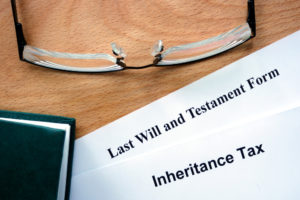The Residence Nil Rate Band (RNRB) came into effect on 6 April 2017. This is an Inheritance Tax allowance which will be available in addition to the standard Nil Rate Band, currently £325,000, where the family home is left to children or grandchildren. Whilst the legislation itself is rather complex, here are five things you should know about the RNRB.
Amount of RNRB available
Although the RNRB came into force on 6 April 2017, it will be phased in over the next four years. The RNRB will start at a maximum allowance of £100,000 per person and will increase by up to £25,000 each tax year until 2020. After 2020, the maximum RNRB will increase in line with inflation (based on the Consumer Prices Index).
| Tax Year | Maximum RNRB available |
| 2017-2018 | £100,000 |
| 2018-2019 | £125,000 |
| 2019-2020 | £150,000 |
| 2020-2021 | £175,000 |
Who qualifies for the additional RNRB?
An individual’s estate will only be entitled to benefit from the RNRB where:
- An individual dies on or after 6 April 2017;
- An individual owns a home, or a share of one, and this has been occupied as their residence at some stage before their death (although see later comments on downsizing); and
- The home, or a share of it, is inherited by direct descendants such as the deceased’s children or grandchildren.

Larger estates may not benefit from the RNRB
Where the value of an estate is more than £2 million, after deducting liabilities but before reliefs and exemptions are applied, the RNRB will be tapered away or withdrawn completely. The RNRB will be reduced by £1 for every £2 that the estate exceeds the £2 million threshold and so, on the introduction of the RNRB, there will be no RNRB available if the deceased had assets of more than £2.2 million. This will rise to an estate of £2.35 million in 2021-2021.
Transferring the RNRB between spouses
Similar to the standard Nil Rate Band, any unused RNRB will be transferrable to a surviving spouse or civil partner. This rule applies even when the first spouse or civil partner died before the RNRB came into force (6 April 2017) and it does not matter whether or not the first spouse to die owned a residence, or a share of residence, at the time of their death. Therefore, there will always be an additional 100% RNRB unless the estate of the first spouse exceeded the £2 million threshold.
Downsizing
Where an estate does not qualify for the full RNRB, it may benefit from an additional amount known as the ‘downsizing addition’. This is to help those individuals who have downsized or sold their property. The downsizing addition will be available if:
- The deceased disposed of a former home and either downsized the property to a less valuable home, or ceased to own a home, on or after 8 July 2015;
- The former home would have qualified for the RNRB had it been retained; and
- At least some of the estate is inherited by the deceased’s direct descendants.
For more information on the detail of this new inheritance tax or to discuss private client related issues more widely, please email privateclient@bishopandsewell.co.uk, or call 020 7631 4141 and ask to speak to Helen Langworthy or Shelina Vaiya from the Private Client team.






